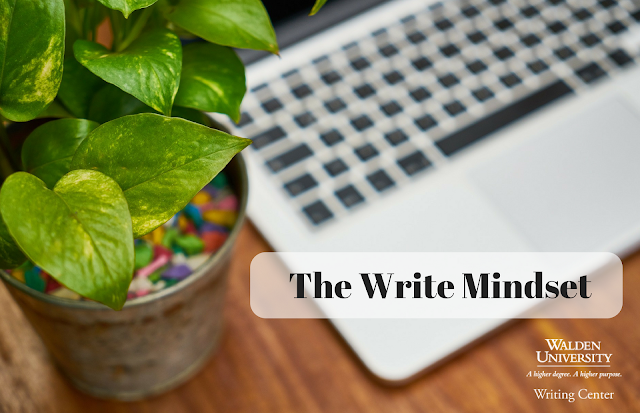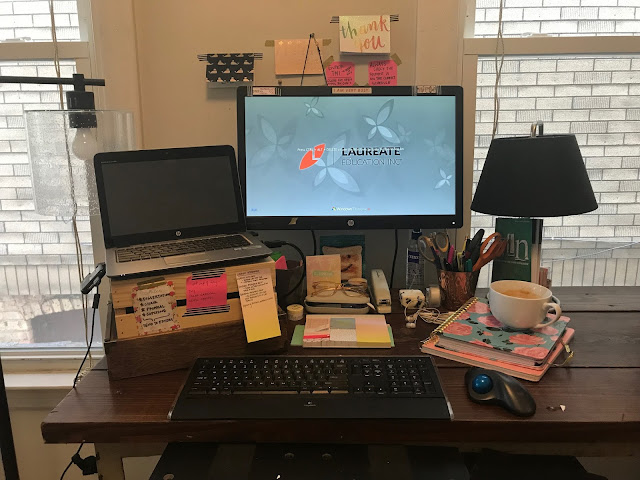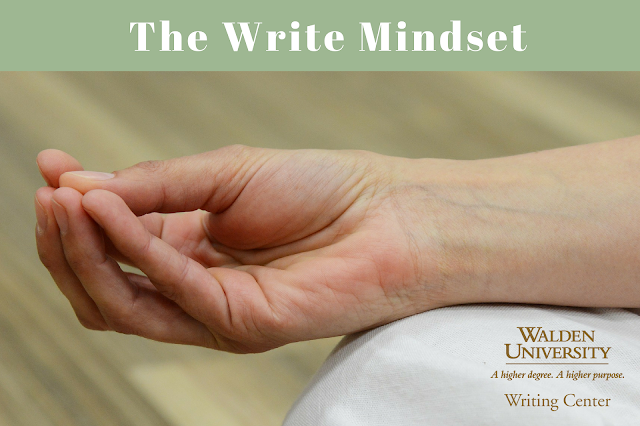APA How-To: Use of Secondary Sources
Sometimes, writers will come across a source within another source that is perfect for whatever argument they are attempting to make. If writers are not careful, this situation can lead to confusing APA-style citation situations. So much so, APA style contains special formatting guidelines for citing this type of secondary source.According to APA Publication Manual, 6th edition, p. 178, §6.17: “Use secondary sources sparingly, for instance, when the original work is out of print, unavailable through usual sources, or not available in English.” With all the full text available these days, there is an expectation that, if a quote is preferred, its original source should be obtained and read. Otherwise, you are asking your readers needlessly to trust an unknown intermediary.
If you must use a secondary source, however, you can't cite it alone; it’s not that simple. You need to “give the secondary source in the reference list,” according to APA Publication Manual (6th ed., p. 178, §6.17). Then, “in [the] text, name the original work and give a citation for the secondary source. For example, if Allport’s work is cited in Nicholson and you did not read Allport’s work, list the Nicholson reference in the reference list. In the text, use the following citation: Allport’s diary (as cited in Nicholson, 2003).” All of this information is needed because readers need to know your sources; they also need context for the quote from the original, in this case, Allport’s diary.
May Webinar Preview
It's almost May, which means it's almost time for our May webinars! Spring is invigorating in so many ways. With the blossoming flowers also seem to come new, budding inquires about APA style, paragraphing, and more. We love the unique questions that students present during our live, interactive webinars, and we hope you'll join us to present your own questions. You may even hear the chirp of a bird or two if our nearby windows are open. |
| Join us this month for some exciting webinars! |
Upcoming Webinars
- Writing at the Graduate Level
7:00PM - 8:00PM Wednesday, May 2, 2018 - When and How to Include APA Citations
1:00PM - 2:00PM Thursday, May 10, 2018 - Practical Writing Skills: Adding Analysis & Synthesis
8:00PM - 9:00PM Tuesday, May 15, 2018 - Mastering the Mechanics Part 3: Revising Sentence Structure
3:00PM - 4:00PM Wednesday, May 23, 2018
The full list of May webinars can be found on this page. Should these dates and times not work for you, remember that we record all sessions. The webinar recording archive houses all past webinars. Happy webinar viewing!

The Walden University Writing Center presents weekly webinars on a range of topics related to scholarly writing, APA style, and the writing process. In addition to webinars, the writing center offers paper reviews, live chat, and a podcast to support writers during all stages of their academic careers.
.png)
Never miss a new post; Opt-out at any time
The Write Mindset: Managing Time Mindfully
If you’re working on your degree alongside other work
or family obligations, you’re probably looking for ways to make the most out of
your limited time, right? Read on for a mindful time management strategy that’s
working for me as I write my dissertation while working full time and taking
care of a toddler. I promise I’ll keep it short!
A lot of academic advice recommends a project
management approach in which you break down a large project into as small of tasks
as possible and schedule a time to complete each one of these tasks. This seems
like a great way to stay on track and motivated, but I found I was constantly
failing to stick to my plan: just one night when my kiddo wouldn’t sleep would
throw the whole thing off, making me feel guilty and frustrated. I needed to adjust
this approach for it to work for my lifestyle.
First, I make a list of tasks that I plan to complete each
week. I then divide that list in half, marking half of my list as “must do” tasks
for the week and half of the tasks as “bonus,” tasks that would be great to get
done, but that I won’t beat myself up for not finishing. Once I have that list
in place, I categorize the tasks in another important way: by energy level.
I’ve found that some tasks are “high energy” tasks that require the ability to
focus, while other tasks are “low energy” tasks that I can probably manage to
finish even if I’m feeling a little tired or distracted that day.
Here is an example of what my to-do list might look like:
- Freewrite for 10 minutes at the beginning of each day on a topic related to my current chapter
- Respond to email from my mentor
- Transcribe notes from book I read last week, and add it to my literature review matrix
- Read and take notes on next books in my literature review
- Email lead about a research question I have
- Read and take notes on next book in my literature review
In this list, I have bolded my “must do” tasks for the week, and the “bonus” tasks are in regular font style. The “high energy” tasks are highlighted in yellow, and the “low energy” tasks are highlighted in blue.
Integrating mindfulness into my project management has helped my writing process tremendously. I’ve become better at prioritizing my time and making sure I’m focusing on what’s important each week. Knowing that I have a list of tasks I can work on even when I’m tired makes me more likely to sit down at my desk and get a little bit done rather than blow off a dissertation session entirely. Finally, because my task list is more manageable, I actually accomplish it, which makes me feel better about the project overall.
If other time management systems aren’t working for
you, think about giving this one a try! And please share your favorite
strategies in the comments—we’d love to hear from you!
Cheryl Read is a Writing Instructor in the Walden University Writing Center. She’s so interested in time management that she sometimes finds herself procrastinating by dreaming up the next “perfect” schedule. When she’s not helping student writers at Walden, Cheryl stays busy playing with her son and working on her dissertation.
.png)
Never miss a new post; Opt-out at any time
Let's Get Personal: Utilizing 1st Person Point of View in Academic Writing
A little something to remember: Even when we include our personal experiences, we have to
follow APA style guidelines and general best practices in academic writing. Here
are some of the resources you may find useful when including first person point
of view and personal experiences in your academic writing.
- First person point of view overview: This page from our website explains what first person is and when to use it
- How and when to use first person pronouns: Our blog post will explain how to use first person pronouns appropriately in academic writing
- An overview for including personal narratives: This is the first in a multi-post series about how to include narrative writing in academic writing
- Citing personal communication: If you interview someone as part of your personal experience, that conversation can (and should) be cited
- Citing yourself: Referring to something you have worked on in the past can be another way to include personal experience, but we have to remember to cite ourselves

The Walden University Writing Center creates and organizes material related to all aspects of scholarly writing. Explore our blog posts, modules, webinars, website content, and more by starting at our homepage: https://academicguides.waldenu.edu/writingcenter
.png)
Never miss a new post; Opt-out at any time
The Write Mindset: Creating Mindful Writing Spaces
As a Writing Instructor, a large part of my workday is spent
writing emails, academic resources, and paper reviews. Because I work from home, some mornings the
desire to hit snooze three times, roll from my bed to my couch, and write in my
pajamas all day is too real! To avoid making a permanent indent in my couch,
I’ve created a mindful writing space where I look forward to spending my day. I shaped this space
by asking myself three questions.
What helps me to stay productive?
I know from experience that I cannot remain productive if I
plop down with my laptop in front of the TV. I do my best work in a bright,
organized space, (away from distractions) where I have everything I need. To
create this space in my tiny apartment, I turned the dining room into my office.
Out went the dinner table, and in went my over-sized, industrial work desk—one
of my treasured, vintage finds. I have dual-monitors, which allows me to keep my
email open on one screen and my paper reviews on the other. Spread out in front
of me are my agenda, phone, to-do lists, and all of my favorite office supplies.
With everything in arm’s reach, I never have to track down a pen or my phone.
The light coming in from the windows and lamps keeps me alert, and if all else
fails, I am only a couple steps away from the coffee maker.
What makes me feel comfortable?
For me, part of staying on task is making sure I am
comfortable; otherwise, it is too easy for me to become distracted by the
smallest things in my environment. For example, I get cold easily, so in the
winter I set up a little space heater near my desk, and I always have a sweater
handy. I enjoy working in a clean space, so I tidy up every morning before I
even open my email. Also, I have a sensitive nose, and certain smells help me
stay alert. For example, diffusing grapefruit essential oil throughout the day
keeps me happy. These little steps make my workspace pleasant to work in, and
they are comforting if I am having a particularly busy or stressful day.
What is and isn’t in my control?
While I have taken a number of steps to prepare my workspace
for productivity and comfort, all of the preparing in the world may not solve a
bad case of writer’s block. Some days, I write a new email and the words pour onto the screen.
Other days, I can get stuck for hours writing a grammar tutorial. My
thoughtfully curated workspace does not always help me write at 100%. On these
occasions, I have to check-in with myself to figure out what’s going on. I ask
myself if I’m hungry, or cold, or under-caffeinated, but if these basic needs
have been met, then maybe something else is getting in my way. I could be stressed
about another project or distracted by a personal matter. If this is the case,
I actually step away from my writing space. I may take my dogs for a walk or
head to the gym. I find that if I move to a completely different location, I
can usually clear my head. On days where I am just stuck, and the only things I
can control are my actions and thoughts, walking away from my writing and my
desk helps keep my workspace a positive, productive place.
I hope sharing my writing space with you inspires you to
create (or return) to your own mindful spot. Do you have a special nook set up
in your home? Or, do you hunker down in your local coffee shop? Please share
pictures of your writing space with us on our Facebook page, or describe your
writing space for us in the comments below!
Tasha Sookochoff is a writing instructor in the Walden University Writing Center. Along with earning degrees from the University of Wisconsin, Stout and Depaul University, Tasha has written documentation for the U.S. House of Representatives that increases government transparency, blogged for DePaul University, copy-edited the Journal of Second Language Writing, tutored immigrants and refugees at literacy centers, and taught academic writing to college students.
.png)
Never miss a new post; Opt-out at any time
The Write Mindset: A Three-Part Blog Series
On our blog, we’ve written about breaking writer’s block by finding a suitable writing environment, turning off your
internal editor, and carving out writing time despite a busy schedule. However,
as writers and humans, sometimes what blocks us—writing or otherwise—is a lack
of mindfulness
and self-care.
While none of us in the Writing Center are self-professed experts on the
subject, some of us would like to share with readers some mindfulness and
self-care tips we have for getting into the “write” mindset to ensure we aren’t
our worst enemies when it comes to creating and sticking with writing goals and our busy schedules. We’ll be sharing these tips over the next few
weeks here on the blog.
For the purpose of this blog series, mindfulness can be
understood as the mental space between our rational mind and our emotional mind—like
a happy union between our logical thinking selves and our feeling selves that
helps us make wiser decisions which, for instance, can help us reach our goals.
For many of us, mindfulness is a skill and not something we are automatically
born with. For instance, your rational mind might remind you Saturday morning
that you need to begin working on drafting that paper that is due next week,
whereas your emotional mind might convince you that you can put it off another
day for x, y, or z reasons. This is not to say that the emotional mind is
wrong; rather, if our emotional mind greatly conflicts with our rational mind,
or if it takes center stage in our actions and decisions, we might tend to find
ourselves in situations that may eventually lead us farther away from our
goals—education, career, or otherwise.
You can read all of our posts in this series as they're published.
Finding Your Drishti: A look at how the mind and body work together, as well as tips for how a yoga practice can enhance your writing practice
Creating Mindful Workspaces: A glimpse inside of the workspace of one Walden Writing Center Instructor and how mindfulness can influence physical spaces
Managing Time Mindfully: A Writing Instructor's strategies for balancing work, writing, and family using simple time-management techniques
With this in mind, we hope you enjoy our Instructor posts on tips for getting into The Write Mindset and we hope you share with us your own tips for harnessing this mindset as well!
The Walden University Writing Center strives to support student writers in all of their academic writing pursuits. The Instructors, Editors, and Leadership of the Writing Center recognize that learners and writers have different needs. As such, we produce a variety of resources intended to support writers where they are, when they need them.
.png)
Never miss a new post; Opt-out at any time
The Write Mindset: Finding Your Drishti
Admit it—it can be easy to let your mind wander while
working on a paper—maybe you get distracted by bills, work, or something else.
While this can be inevitable, it can also lead towards more distractions where you aren't working in the present in ways that move you forward towards your future
goals. In this blog post, I’d like to share how I used the practice of yoga to
decrease distractions and increase productivity while writing
my dissertation.
What does yoga have to do with writing? Well, not much
really—not directly anyway. For me, though, yoga has served as one way for me
to practice mindfulness
by working on my drishti—where
I focus my attention. In other words, it has helped me learn to stay focused on
the present moment, so I could, for instance, sit down and focus on writing my
dissertation instead of worrying about x, y, or z—in other words, whatever else
was going on in my life.
When I was working on my dissertation, I was also going
through other “stuff” and that other “stuff” tended to take the front seat to
the dissertation (seriously, I will save you the details of the “stuff”). Life
happens, of course, and sometimes tending to that does need to come first. That
said, it’s important to be able to strike a balance among life, work, school,
and other “stuff” so everyday life (and not-so-everyday life) doesn’t distract
us from working towards our current and future goals, such as writing that dissertation,
graduating, and moving on and up in our careers.
One thing that has helped me find that balance is the
practice of yoga. More specifically, yoga has helped me de-stress
and practice
self-care so that when unexpected “stuff” happens—when just everyday life
happens—I feel more calm and mindful so I can focus on both the present (such
as writing that dissertation) while also dealing with life and “stuff.” To be clear, this increased focus has helped
me consider what actions I need to take in the moment, so I can both take care
of things as they come, move forward through them, and continue towards my
future goals so I don’t become “stuck.”
While learning writing skills is important, as both a
student and a teacher, I noticed that other skills are equally important—skills
such as mindfulness—that we may or may not have naturally acquired.
For me,
like the skill of scholarly writing, mindfulness is something I had to learn
and, like writing or any other skill, it takes continual practice. Admittedly,
any type of exercise can likely help, but for me, yoga, with its focus on the mind-body connection, has been about working
on grounding myself in the present. That said, I wanted to share this strategy that
isn’t so much about a direct writing skill, but about self-care that fosters
the development of other skills, such as writing.
Have any mindful writing tips of your own? We would love to
hear what helps you get into the “Write mindset"!
Veronica Oliver is a Writing Instructor in the Walden Writing Center. In her spare time she writes fiction, binge watches Netflix, and occasionally makes it to a 6am Bikram Yoga class.
.png)
Never miss a new post; Opt-out at any time
Thursday Thoughts: Scholarly Voice and Tone
Have you been told that your phrasing is too casual in tone
and you need a more formal tone? Are you confused about what scholarly voice
and tone mean? New and returning students often struggle with creating the “right”
voice and tone for academic audiences—voice and tone that differ from a lot of
what people read on a more daily basis, such as blogs, social media feeds, and news
or magazine articles.
Check out the Writing Center’s sources on scholarly voice and tone to learn more about what this important aspect of scholarly
writing entails.
The Walden Writing Center provides information and assistance to students with services like live chat, webinars, course visits, paper reviews, podcasts, modules, and the writing center webpages. Through these services they provide students assistance with APA, scholarly writing, and help students gain skills and confidence to enhance their scholarly work.
.png)
Never miss a new post; Opt-out at any time
Use the Paramedic Method to Resuscitate Your Writing
The point of this blog post is to introduce a method of revising writing that will include a discussion of the paramedic method to help writers reduce the wordiness in papers.
Does something seem a little off about that first sentence, but you just can’t put your finger on it? The sentence is grammatically correct, and the idea progression is logical. However, the length of the sentence doesn’t seem to match the simplicity of the topic. I used 32 words to introduce the topic of this blog post, but it’s possible that not all of those words were necessary to the meaning of the sentence. Let’s look at a sample revision:
Using the paramedic method can help writers reduce wordiness.
Whoa. I reduced the word count of the sentence from 32 words to 9 words and clarified the topic of the blog post in the process. Some of the words in the first sentence definitely weren’t necessary! This brings to light the importance of writing concisely—readers need to be able to easily decipher the topic of each sentence without having to read through it multiple times. Writing concisely can help writers clarify the ideas in their writing for readers. However, how can writers decide what to remove from their sentences when a course instructor or writing instructor suggests improving concision in writing?
One method for reducing wordiness is to apply the paramedic method, which Richard Lanham introduced in Revising Prose. The paramedic method can help you reduce word count, eliminate passive voice, and clarify your prose with a simple underlining and italicizing method. To begin using the paramedic method, open a paper that you’re revising and apply these steps to your first paragraph:
1. Italicize the prepositions (e.g., in, on, of, to, from, at, with, etc.).
2. Underline the is verb forms. These verb forms, which Rachel called the buzzing to be’s in her blog post about passive voice, include a “to be” verb (e.g., am, is, are, was, were, be, being, been, have been, will be, etc.) added to the beginning of another verb (e.g., was researched, will be provided, is featured).
3. Once you have completed steps 1 and 2, look at each sentence and determine the actor for the action in the sentence. Ask yourself, “Who is kicking whom?” If the actor of the action is missing, add it to the sentence. If the actor is placed after the verb rather than before the verb, move it to before the verb to highlight the actor of the action rather than the object of the action.
4. Change the action into a simple verb. Eliminate those buzzing to be’s whenever possible.
5. Eliminate any slow wind ups. In other words, eliminate any information that the reader doesn’t need to understand the sentence.
6. Eliminate any repetitive words or phrases.
You can repeat this process as necessary to reduce wordiness in your paper. Let’s return to the first sentence of this blog post and apply the paramedic method to it:
- The point of this blog post is to introduce a method of revising writing that will include a discussion of the paramedic method to help writers reduce the wordiness in papers.
I count six prepositions and two “to be” verbs in this sentence. In addition, I begin with a slow wind up in this sentence; I don’t need to say what the point of the blog post is when I can just show the reader the point of the blog post. Using the paramedic method also helps me to see that some of the words are redundant. I don’t need to use “method” twice in the sentence, and I can tell readers how to reduce wordiness in their papers without referring back to revision.
To recap, using the paramedic method helped me to see areas of redundancy within this sentence, and I was able to remove all “to be” verbs and prepositions in my revision: Using the paramedic method can help writers reduce wordiness.
While the paramedic method is a radical way to rethink revision that you can use in any paper, please keep in mind that passive voice is sometimes useful and necessary. You may need to conceal the actor in a sentence, or you may want to emphasize the object of the sentence rather than the actor. As Brittany and Beth discussed in WriteCast Episode 22, passive voice and concision are both grey areas in APA style, so you should use your best judgment as well as the feedback of your instructor in revising your writing for clarity and conciseness.
I’d like to leave you with another chance to practice before I sign off:
In the research there was a discussion of the different variables by the researcher (Doe, 2016). The variables were provided by the researcher in order to better illustrate in what manner the research was to be conducted (Doe, 2016).The sentences above could use resuscitation, so I invite you to use the paramedic method or your preferred method of revision and then share your results below by leaving a comment. There isn’t one right answer, so we’d love to see how you would revise these sentences, along with any tips or suggestions you have for writing concisely!
Katherine McKinney is a writing instructor in the Walden University Writing Center. She received an M.A. in English from Valdosta State University in Valdosta, Georgia, and is currently pursuing a Ph.D. in Education at Walden. Katherine's goal as an instructor is to show students that the best writing results from practice, and she aims to provide feedback and resources that will guide students through the invention, composition, and revision process.
.png)
Never miss a new post; Opt-out at any time
Subscribe to:
Comments
(
Atom
)

.png)

















No comments :
Post a Comment